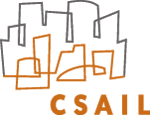MIT Computer Science and
Artificial Intelligence
Lab
| |
| Home |
| People |
| Publications |
| Projects |
| Contact |
| Projects: |
Network architecture The members of the ANA group have been concerned with the fundamental design principles that underlie networks such as the Internet. Early work in this area include the articulationof the end-to-end arguments, and the description of application layer framing (ALF). Names and naming have been a long-term interest. More recent work includes the concept of "Tussle" and tussle spaces, development of the concept of regions within an Internet and the knowledge plane as a new abstraction for network management. Current work is centered on the NSF FIND program, described at right Network performance Early work on performance focused on congestion and its control and on implemtation limitations to network throughput. Contributions include "upcalls" and analysis of TCP processing overhead.In the 1990's we worked on Quality of Service in the Internet, and were part of the collaboration that developed IntServ, DiffServ and RSVP. More recent work includes new proposals for congestion control, and development of best practice for implementation of inter-provider QoS in the Internet. Security Early work by group members centered on the design of multi-level secure operating systems (Multics). in 1987, we proposed a new model for information integrity, called the Clark-Wilson Model. In 1990, Clark chaired a study committee of the Computer Science and Telecommuncations Board of the National Academies, which released a report titled Computers at Risk. Our more recent work involves the Privacy and Security working group of the CFP (see at right) and the NSF FIND program. Policy studies The Internet is shaped as much by the larger context in which it sits as by technology along. Economic, cultural and regulatory issues will define the future of the network. Our work includes early analysis of architectural alternatives for VoIP, the economic and regulatory issues that surround residentlal broadband deployment, and study of interconnection issues in the Internet Recent work includes work on spectrum policy, incentive problems for residential broadband providers, interconnection issues in the Internet, and cost models for network usage.
|
| Collaborations: Communications Futures Program Future Internet Architecture (FIA) Program on Emerging Technology |
